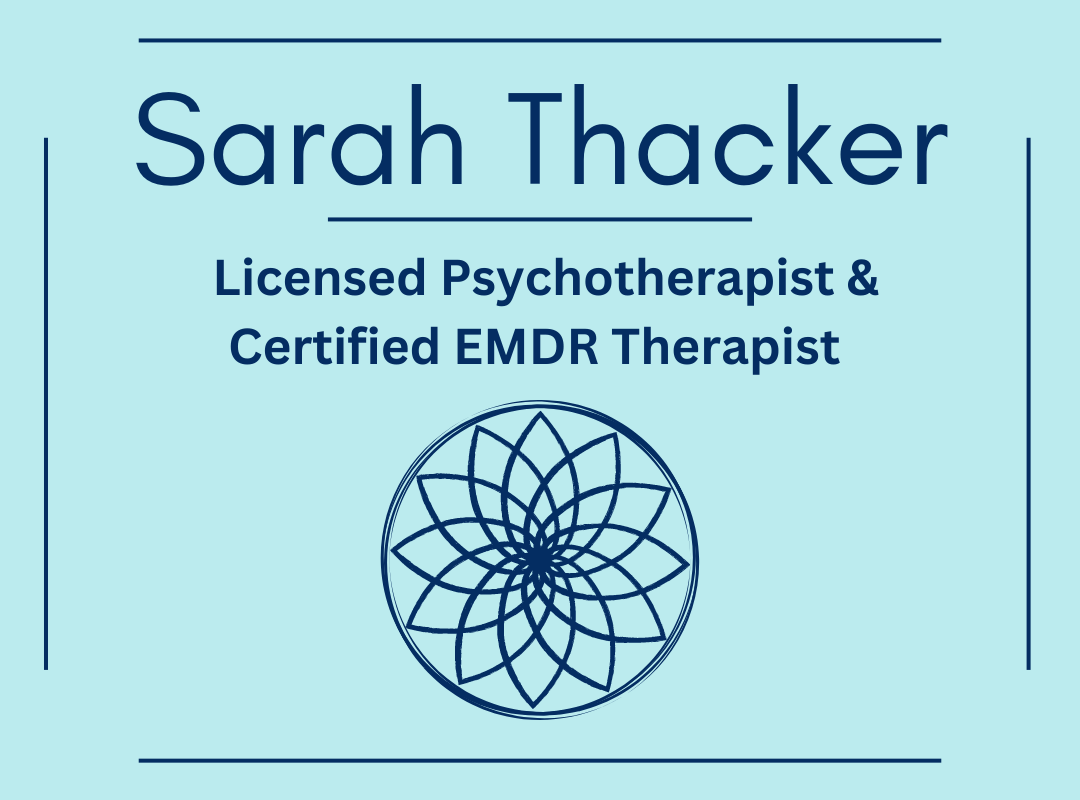Do you ever feel as though you are reliving the same patterns, or having the same recurring negative thoughts or experiences? Many of us are operating out of subconscious negative beliefs that are creating distressing patterns of thoughts, behaviors, and limiting our ability to feel worthy and deserving of the life we desire.
EMDR is a powerful therapeutic modality that helps to release these beliefs from our subconscious and unconscious minds, and allows us to live in a less uncomfortable, anxious, and fearful state of being. Through EMDR therapy we can release these limiting beliefs so that we can feel more empowered, confident, and safe in our daily lives.
One way to confront these limiting beliefs and negative cognitions is to do intensive EMDR therapy. This is where session times are extended so we can do a deep dive into releasing these beliefs about ourselves. Since I began offering EMDR intensives, I have had a lot of inquiries about why choose an EMDR intensive model over more traditional, weekly, 50 minute sessions. So I thought I’d write a little about what an EMDR intensive even is, and how to know if it might be right for you. (If you are not familiar with EMDR as a therapeutic modality, you can read a previous blog I wrote on the topic HERE or learn more about it from the EMDRIA homepage HERE.)
An EMDR intensive is indeed, just as the name implies, intense. They are longer EMDR sessions (usually 2.5-hours, 4-hours, or even longer) where you focus for an extended period of time on your desired area of inner work. EMDR is considered a maximum exposure therapy, where you are reprocessing a specific trauma, memory, feeling state, or experience in a way that you are fully present with any lingering and unprocessed distress of that particular experience.
The discomfort that remains is based on a subjective level of distress you still experience when thinking about the memory. This is based on somatic, mental, and emotional discomfort. Through the bilateral stimulation of the brain, (and through the lens of the adaptive information processing model) repeated exposure and reprocessing of the memory allows the brain and body to release the physical, mental and emotional pain associated with the memory, so the distress level inevitably comes down. The goal is to have the distress become a 0 (subjectively on a 0-10 scale) where it feels that no distress remains present. The memory is then successfully reprocessed and released into your long term memory, rather than looping and causing triggering responses to your present life circumstances.
Once the distress is a 0, a positive cognition is created and reinforced through bilateral stimulation as well, and once it feels absolutely true (this is gauged subjectively on a number scale as well) as an inner felt sense, it is practiced with future templates. Imagining yourself accessing this new positive cognition in potentially distressing or triggering circumstances within the future helps to create new patterns and possibilities. Through this work you can now begin to respond and react within those future challenging moments in a more grounded and steady manner.
All that I’ve described so far is a very rough and quick overview, there are certainly many more elements incorporated into EMDR therapy, however this intended as just a basic gist. Our goal is to rewrite negative cognitions, or beliefs about the self, that have been created or reinforced through these distressing memories, experiences, and traumas. These experiences created beliefs about the self that perpetuated patterns of behaviors, thoughts, and feelings that can create negative internal experiences as well as difficulty feeling truly confident, hopeful, grounded, and worthy just as you are.
Through the inner work, you can release the trauma still stored mentally, physically, and emotionally, and therefore release the negative beliefs that have arisen out of those experiences. This creates a new way of existing within your life that is freeing and empowering.
With a traditional 50 minute session there is some preparation, potentially reprocessing and desensitization, verbal processing, grounding and re-stabilization in a relatively short time. With an EMDR intensive you are in that potentially reprocessing and desensitization phase for a much more extended period of time. I have found that a 2.5-hour EMDR intensive is similar to approximately 4 sessions when using the traditional, basic protocol. A 4-hour intensive is similar to approximately 6-7 sessions when using the traditional, basic protocol. There are always potentially other elements incorporated into sessions depending on each person’s individual needs along the way.
If you are someone who has done some personal work already and feels that EMDR could be helpful to resolve some traumatic memories, this could feel really nice, to get in a lot of therapy in a shorter, more intensive period of time. These intensives are useful if you find that you have some patterns that you seem to repeat in relationships, with money, with food, with negative self-talk, and with specific anxieties. Initially, we identify the primary negative cognition, and then use the protocol to work through these memories or experiences that seem to repeat themselves in a way that makes sense for you.
For example, if you are someone who finds that you seek out relationships with people who are emotionally unavailable over and over, there may be a limiting believe or negative cognition that is stuck in your subconscious that can be worked through in a short series of EMDR intensives. We first identify the negative belief about yourself, and then work with the memories that have created or reinforced that belief. Or, if you are someone who seems to fall into the same patterns with food, or money and spending that you have repeatedly tried to change, this too could be reinforced subconsciously by a negative internalized belief that can be worked through with EMDR intensives. I have found intensives to be helpful for those struggling with perfectionism, creative blocks, resistance to or fear of change, specific anxieties (such as flying, driving over bridges…) and much more.
If you are interested in an EMDR intensive, it is best to reach out to a few certified EMDR therapists who offer them, who are also licensed in your state. Many therapists are willing to offer a 15-minute consultation where you can describe your current needs/goals and they will be able to determine if you may be a good candidate for intensive EMDR therapy. I am licensed in New York and Virginia, and therefore only can offer them to those currently living in either of those states. For people with chronic or complex post traumatic stress disorder who are just beginning treatment, those with a low distress tolerance, and for those with certain chronic conditions, I have found that traditional weekly sessions tend to work best, however, everything is truly determined on a case-by-case basis.
I hope I’ve piqued your interest and maybe you will think about considering EMDR intensives as part of your personal growth, mental wellness, and emotional health process. Here’s to confronting our negative internalized beliefs head-on and creating a more empowered, confident self and living a life fully immersed in a feeling of worthiness. You deserve to feel your best and live your best life.



